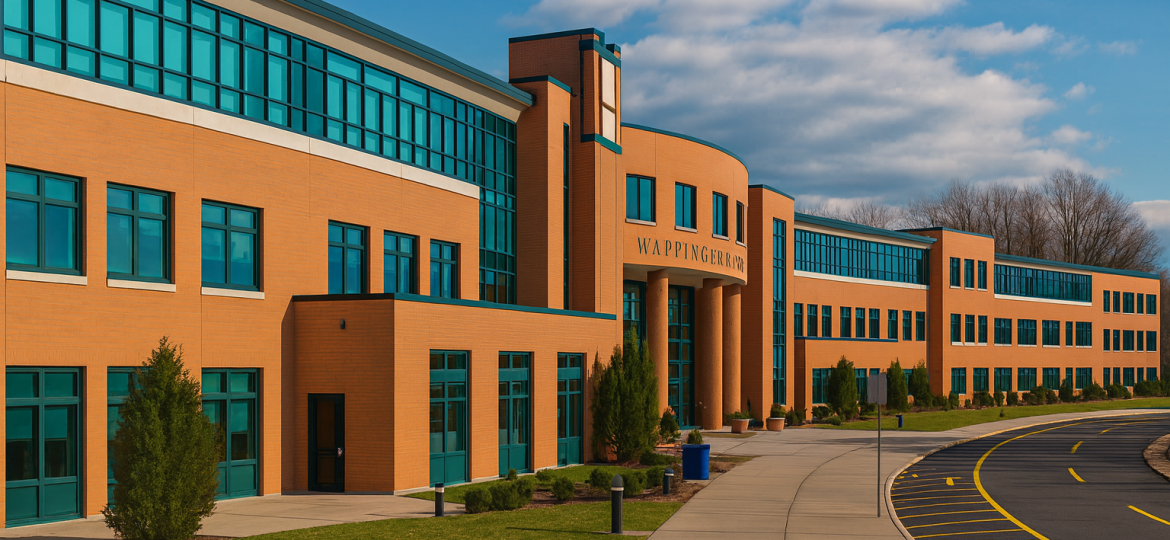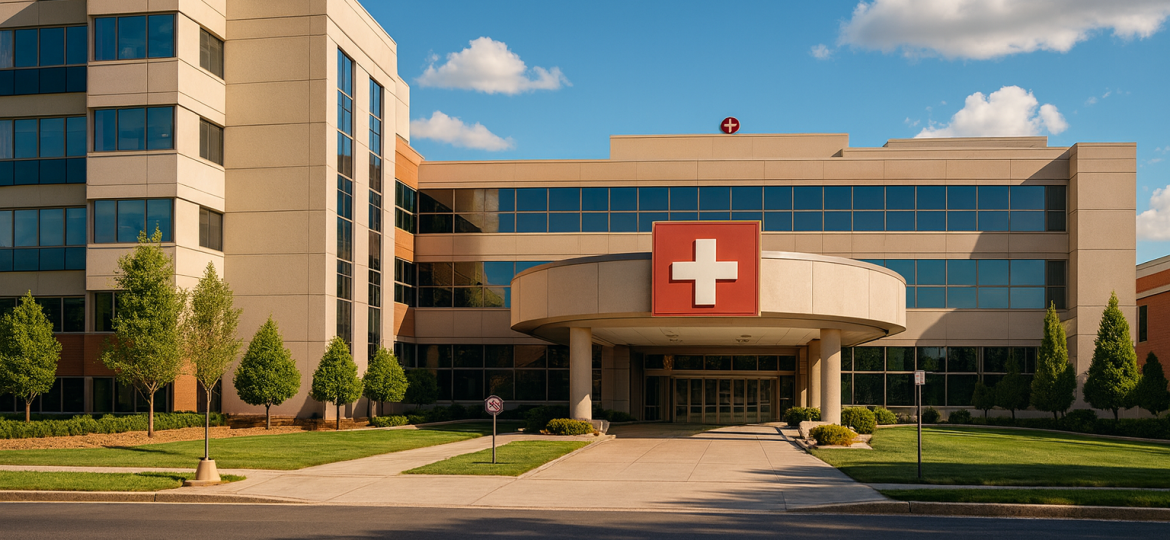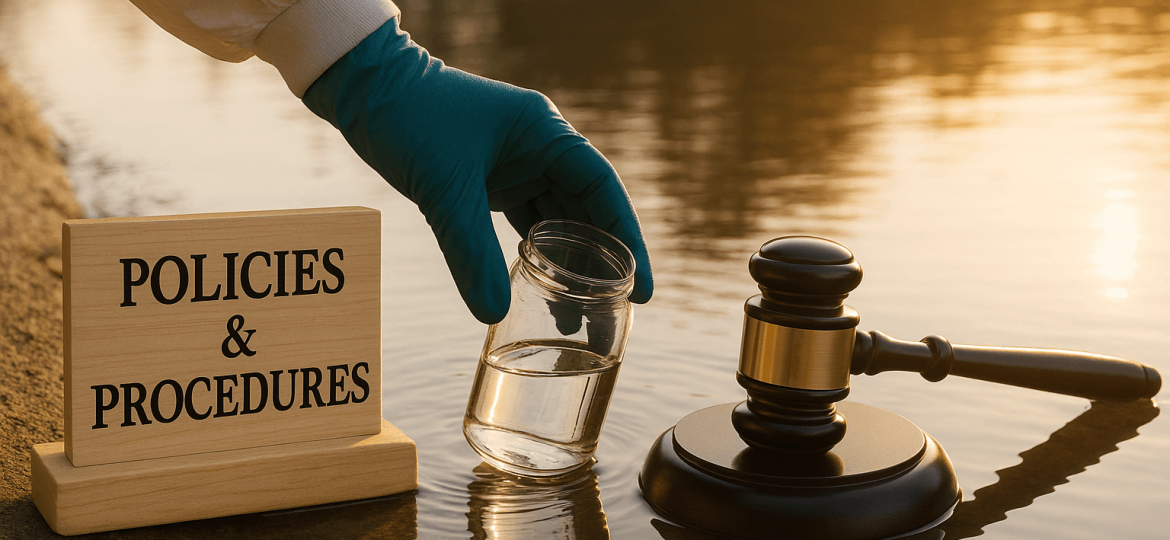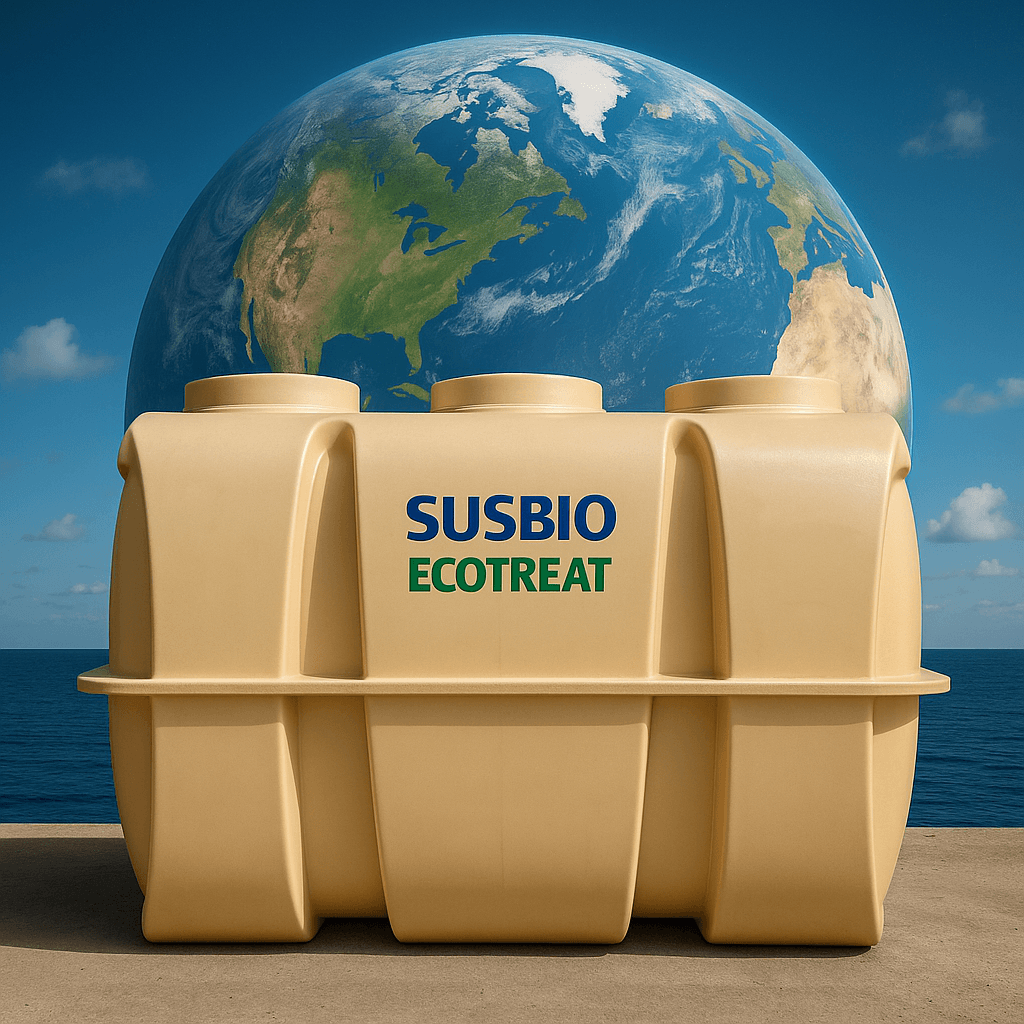The cost of a sewage treatment plant ranges between INR 1.5 lakhs to INR 80 lakhs based on what you need and how big you want it. This major investment needs more thought than just looking at the price tag. Most people think over the upfront costs while planning their STP setup, but they often miss the running costs that really affect the total investment over time.
The math behind STP costs must include both one-time and recurring expenses. Your cost estimate should cover design fees, construction work, land costs, permits, and equipment as one-time expenses. The real picture of STP costs comes clear only when you look at day-to-day running expenses. Power consumption takes up much of these ongoing costs.
Note that the complete financial picture can show some impressive returns. Take a 50-100 KLD sewage treatment plant that costs around INR 8 lakhs – it can save you INR 4-5 lakhs yearly on water costs. You can recover your money in just 18-24 months. In this piece, we’ll get into the hidden operational costs that shape your STP’s total ownership expense and show you ways to make your investment work better for long-term savings.
Fixed vs Operational Costs in STP Projects
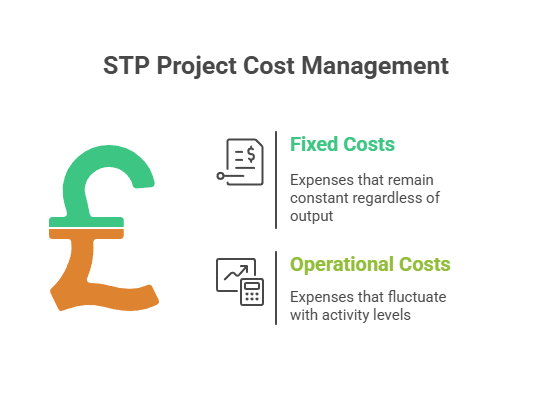
The financial framework of sewage treatment facilities has two main categories: fixed costs and operational costs. This difference helps create effective budgets and long-term plans.
Design and Engineering as Fixed Costs
The cost estimation of sewage treatment plants starts with design and engineering expenses. These first investments cover architectural designs, engineering plans, and feasibility studies that make sure the plant works and meets regulations. Design costs usually make up about 5% of the total project cost for activated sludge systems and 2% for waste stabilization ponds and integrated systems.
Land, Permits, and Equipment Procurement
Land costs are a major variable in calculating sewage treatment plant expenses. Land costs make up about 4% of the total project cost for activated sludge treatment plants, 59% for waste stabilization ponds, and 12% for integrated anaerobic-aerobic sewage treatment plants. Getting necessary permits and regulatory approvals adds to these fixed costs.
Equipment purchases—including pumps, clarifiers, aeration systems, and chemical dosing mechanisms—are the technological foundation of treatment facilities. Modern, energy-efficient equipment might cost more upfront but usually reduces operating costs over time.
Recurring Costs: Energy, Labor, and Chemicals
Energy consumption becomes the biggest expense once the plant is running. Power requirements in India range between 0.5 to 1.5 kilowatt-hours per cubic meter of treated wastewater, with electricity costs of 7-10 INR per unit. Energy can take up much of the operational budget.
A facility’s size and complexity determine labor costs. Small to medium plants typically spend 10,000 to 50,000 INR monthly on operations. Chemical costs—needed for pH balancing, coagulation, and flocculation—change based on water quality and regulatory requirements.
Sludge Management and Monitoring Expenses
Sludge management is often overlooked when comparing sewage treatment plant costs. These expenses can reach 40-60% of total plant management costs. Sludge disposal costs range from 70-250 €/t, while transport adds another 15-20 €/t. Sludge handling has three main parts: collection, dewatering, and disposal or further treatment.
Regular monitoring is needed to comply with regulations. This includes laboratory testing and quality control measures that add to the operating budget.
Hidden Operational Expenses in STP Plants
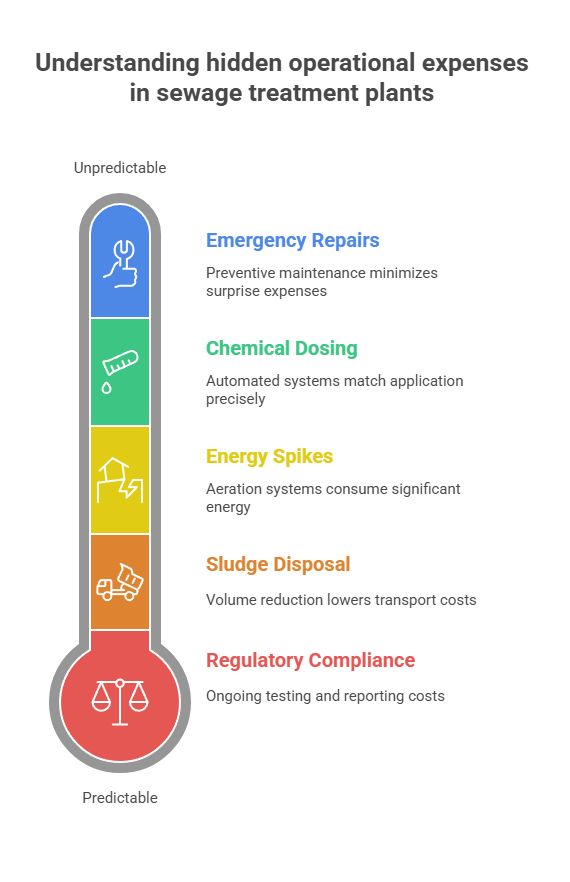
STP operators often face several hidden costs beyond the visible operational expenses. These unexpected costs can affect the actual sewage treatment plant calculations as time goes by.
Unexpected Energy Spikes in Aeration Systems
Energy consumption stands as one of the biggest operational costs in wastewater treatment plants. Aeration systems use 40-50% of total energy. Aerators might need to run continuously at high speeds during high organic load periods, which leads to unexpected power spikes. These systems add oxygen to support biological treatment processes but often run inefficiently and increase electricity bills. Many facilities report unusual power usage when air diffusers get clogged or systems don’t have variable frequency drives to optimize motor speeds.
Chemical Dosing Variability Based on Inflow Quality
Incoming wastewater quality changes often, which creates unpredictable chemical expenses. Facilities that use coagulants, flocculants, and pH adjusters see major cost fluctuations. High oil content, increased organic load, or toxic chemicals in the influent can disrupt treatment processes. This disruption requires extra chemical intervention. Automated dosing control systems help cut these costs by matching chemical application precisely to wastewater characteristics.
Sludge Dewatering and Disposal Logistics
Sludge management takes up 40-60% of total plant management costs. This makes it a critical expense that many overlook. Wet sludge has 95-99% water, which makes transport and disposal get pricey. Dewatering techniques can cut sludge volume by up to 80%, which helps lower these costs. Facilities need to budget for vacuum trucks or on-site dewatering equipment once monthly expenses go beyond INR 1.69 million.
Emergency Repairs and Spare Parts Stocking
Equipment failures create another hidden financial burden. Pumps need the most frequent maintenance, and some require rebuilding every few years. Many facilities don’t keep enough spare parts in stock. This leads to expensive emergency repairs and longer downtime. Setting up preventive maintenance schedules every 3-6 months helps minimize these surprise expenses.
Regulatory Testing and Compliance Overheads
The Central Pollution Control Board requires up-to-the-minute data analysis for STPs above certain capacities. This means investing in sensors for pH, BOD, COD, TSS, and flow rate measurements. Regular laboratory testing and reporting add ongoing costs that many sewage treatment plant cost estimation models don’t consider. Breaking compliance rules can result in big fines or operational shutdowns.
Sewage Treatment Plant Cost Estimation by Capacity

Sewage treatment plant prices show dramatic variations based on capacity. These variations affect equipment size, footprint, and complexity. Here’s a detailed cost analysis for different capacity ranges that will help estimate budgets for specific project needs.
2–10 KLD: Small Residential Units
Small-scale sewage treatment plants serve individual households and small residential complexes in this category. A 2 KLD system’s cost ranges between INR 1.5-3 lakhs, making it ideal for individual households. Larger homes or small residential complexes need 5 KLD systems that cost INR 3-6 lakhs. Medium-sized residential complexes benefit from 10 KLD plants costing between INR 6-10 lakhs. Some sources suggest lower prices of INR 3-5 lakhs. These smaller systems require monthly operational expenses of INR 10,000-25,000.
20–50 KLD: Medium Housing Societies
Medium-sized housing societies need higher investments. A 20 KLD STP plant costs about INR 10-15 lakhs. Systems with 40 KLD capacity range from INR 15-25 lakhs. Larger townships with higher water treatment needs use 50 KLD capacity plants that cost between INR 18-30 lakhs. These medium-capacity systems have monthly operational expenses between INR 30,000-60,000.
100–500 KLD: Large Townships and Institutions
Large residential complexes and institutions demand substantial treatment capacity. Sizable residential complexes or small urban areas use 100 KLD systems that cost between INR 25-50 lakhs[271]. Prices for 200-500 KLD plants range from INR 45-120 lakhs[271]. Larger systems can have monthly operational costs of INR 75,000-1.5 lakhs.
1–10 MLD: Urban and Industrial Applications
Municipal scale installations come with significant cost increases. Medium to large urban areas need 1 MLD plants that require investments of approximately INR 1-2 crores[271]. Sizable urban populations use 10 MLD plants with costs ranging from INR 10-15 crores. These large-scale installations offer better treatment efficiency through economies of scale, despite substantial upfront investment.
Cost Optimization Strategies for Long-Term Savings
Smart cost-cutting strategies can help sewage treatment plants save money throughout their lifetime. The right equipment choices and operational planning lead to big savings in the long run.
Energy-Efficient Blowers and Pumps
A treatment plant’s aeration systems use 25-60% of its total power. Modern energy-efficient blowers cut power consumption by up to 30% compared to older models. Oil-free screw blowers are 30% more efficient than conventional roots blowers. The quickest way to get better results is to replace fixed-speed equipment with variable frequency drives (VFDs). These drives adjust based on actual needs and save an extra 10% in energy costs.
Automated Monitoring to Reduce Labor
Smart IoT monitoring systems use sensors to track dissolved oxygen levels, flow rates, and equipment performance. These systems cut electricity bills by up to 20% through precise control. They also spot potential equipment failures early, which saves money on emergency repairs.
Modular Design to Minimize Civil Work
Modular sewage treatment plants cut original capital costs because they need less on-site construction. These pre-engineered, factory-built systems take weeks instead of months to install. This is a big deal as it means lower labor costs. These systems also need less civil work, which makes construction 30% cheaper than traditional plants.
Choosing the Right Technology: MBBR vs SBR
Technology choice shapes lifetime costs. MBBR systems work great with changing loads and have reasonable capital costs, but you need to invest in media. SBR technology costs less upfront and delivers excellent treatment results—BOD and SS drop to less than 10 mg/l. SBR runs cheaper too, using only 152.5 kWh/day/MLD compared to MBBR’s 222.5 kWh/day/MLD.
Vendor Selection and AMC Considerations
Annual Maintenance Contracts (AMCs) help prevent downtime and unexpected breakdowns. Good AMCs include regular checkups, detailed system inspections, and emergency support. Look at response times, parts availability, and technical expertise when picking vendors. The original price shouldn’t be your only focus.
Frequently Asked Questions
1. What is the average cost of a sewage treatment plant in India?
The cost of a sewage treatment plant (STP) in India ranges from INR 1.5 lakhs to INR 80 lakhs, depending on the capacity, technology (MBBR, SBR), and site requirements. Large municipal plants can cost several crores.
2. What are the hidden operational costs of an STP?
Hidden costs include energy consumption, chemical dosing variability, sludge management, emergency repairs, and regulatory compliance. Energy alone can account for 40–50% of the operational cost.
3. How much does it cost to operate a 50–100 KLD STP?
A 50–100 KLD STP typically incurs monthly operating costs of INR 30,000 to 60,000, covering power, labor, chemicals, sludge handling, and compliance testing.
4. How can STP operational costs be reduced?
Cost-saving strategies include:
-
Using energy-efficient blowers and pumps (saves up to 30%)
-
Installing automated IoT monitoring (saves ~20% on energy and labor)
-
Choosing SBR technology for lower energy consumption compared to MBBR
-
Opting for modular designs to reduce civil work and installation costs
5. Is investing in an STP cost-effective in the long run?
Yes. For example, a 50–100 KLD STP costing INR 8 lakhs can save INR 4–5 lakhs annually on water reuse. Most STPs recover their investment within 18–24 months.
Conclusion
The true financial picture of sewage treatment plants goes way beyond the original investment. Our analysis shows STP costs vary widely – from INR 1.5 lakhs for small residential units to several crores for large municipal installations. Notwithstanding that, these upfront costs tell only part of the story.
The total cost of ownership includes many hidden operational expenses. Energy consumption eats up almost half the operational budget, especially in aeration systems. Chemical dosing changes based on influent quality. Sludge management can take up to 60% of plant management costs. Emergency repairs and regulatory compliance create big financial burdens that many facility managers don’t see coming.
Smart cost-cutting strategies are a great way to get long-term savings. Energy-efficient blowers and pumps cut power use by about 30%. Automated monitoring systems make operations more efficient and need fewer workers. The choice between MBBR and SBR technologies affects both upfront and running costs. SBR usually costs less to operate.
Modular designs help cut costs too. They reduce construction expenses by about 30% compared to regular plants. Picking reliable vendors and getting detailed maintenance contracts helps avoid expensive breakdowns and makes equipment last longer.
A smart investment in sewage treatment plants needs to balance upfront capital with lifetime running costs. Medium-sized plants often save INR 4-5 lakhs yearly on water alone. This shows that well-designed and operated STPs give excellent returns. Facility planners must look at both obvious and hidden costs to understand what sewage treatment infrastructure really costs.



